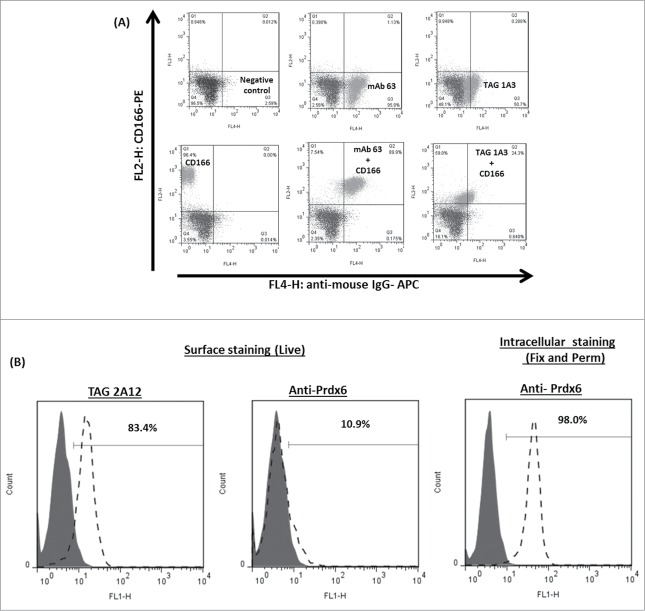Figure 5.
Comparing surface binding of TAG-1A3 and TAG-2A12 with its commercial antibodies. (A) Double staining of TAG-1A3 and CD166. MAb 63 is an in-house antibody that binds universally to human cell lines, and was used as positive control (upper left panel). An isotype antibody was used as a negative control (dark gray). TAG-1A3 and CD166, co-incubated with the positive control, did not alter the binding of CD166 (upper right panel and lower middle panel, respectively) compared to CD166 alone (lower left panel). A reduction in anti-CD166 antibody binding was observed following pre-incubation of hCENCs with TAG-1A3 (lower right panel) but not the isotype control, mAb 63. This suggests that the antibodies were competitively binding to common epitopes on hCENC. (B) Results on flow cytometry staining of cultured hCENCs with TAG-2A12 and commercial anti-Prdx-6 antibody. TAG-2A12 showed binding to cultured hCENCs compared to anti-Prdx-6 where no binding was observed when cells were stained live for surface antigen target binding. Anti-Prdx-6 binding was observed when cells are fixed and permeabilized, thus suggesting anti-Prdx-6 is binding to the intracellular pool of Prdx-6 target in the cells.

